Hanover Bald Eagle Blog # 14 - 2022
In partnership with Pennsylvania Game Commission and Comcast Business .
Written by Zoey Greenberg • In Partnership with Comcast Business and Pennsylvania Game Commission • Powered by HDOnTap
The Hanover nestlings look more eagle-like with each passing day. They are nearly three weeks old, which means they are already developing flight feathers!
Feathers are necessary for many aspects of bird life — insulation, color, camouflage, waterproofing, flight, and more. There are six types of feathers found on birds:
- Contour feathers
- Flight feathers (tail included)
- Down feathers
- Semiplume
- Filoplume
- Bristles
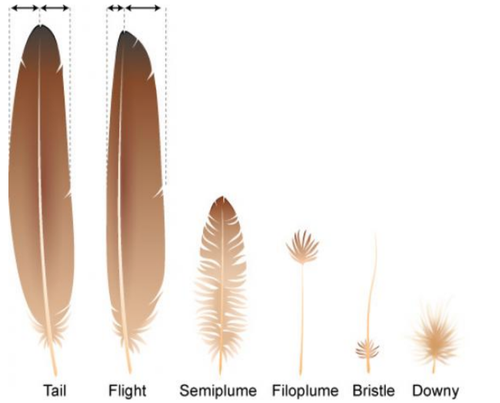
Types of feathers (Source: © Arizona Board of Regents/ASU Ask a Biologist).
Contour feathers are what we see when we look at the Hanover eagles. In essence, they are the external layer of feathers. Because they function as the first line of defense to the world, they literally zip together through a complex structure of interlocking pieces of feather called barbules.
Flight feathers, as you’ve probably guessed, enable flight. They evolved from contour feathers into an aerodynamic shape to allow the marvel of flight, and include the wing feathers. These are further divided into primary and secondary feathers. The primaries are the furthest wing feathers from the bird’s body. The secondaries are the next group in, closest to the bird’s body.
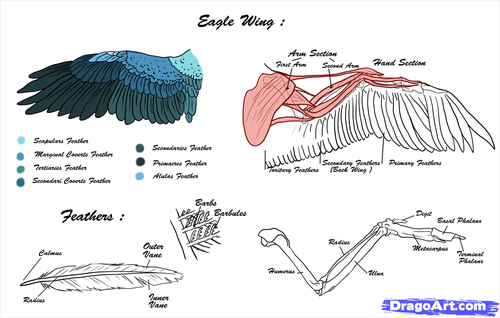
Down feathers are the cottonball-looking feathers that the nestlings have been sporting since day one. Up close, they differ notably from other types of feathers in their poofy, un-zipped appearance. The structure of down feathers allows birds to keep warm by trapping a layer of heated air close to the skin. Of the 7,000 feathers on an eagle, the majority of them are down feathers. Eagles fluff their feathers in cold weather in order to thicken the layer of warm air trapped between the down feathers and the skin, a behavior we’ve observed a lot in the Hanover nest this week.
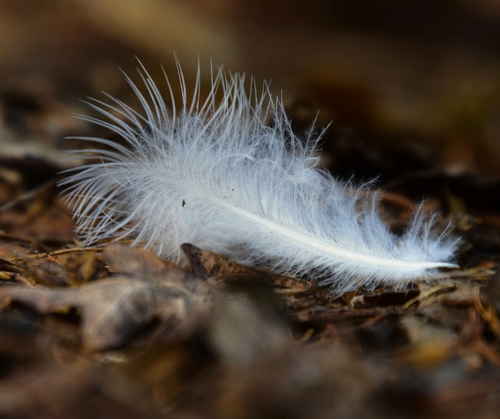
Down feather (Source: Pixabay).
Semiplumes are the fillers between contour and down feathers. They add insulation. Sometimes color can be visible at their tips.
Filoplumes are sensory feathers that help convey information about wind speed, air pressure, and other flight-related details so that a bird can make adjustments in flight. They typically grow around the base of flight feathers, although In some species, filoplumes also serve as elaborate breeding displays.
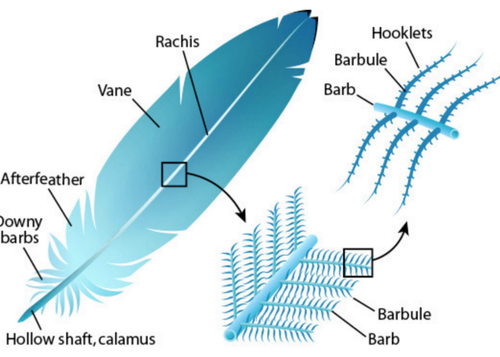
Diagram of a typical contour feather (Source: © Arizona Board of Regents/ASU Ask a Biologist).
Bristles are also sensory feathers, but they are less common. They function like whiskers or eyelashes, increasing a bird’s ability to detect insects and keep debris out of their eyes. Bristles are typically found on birds like nightjars, nighthawks, and other birds that hunt insects.
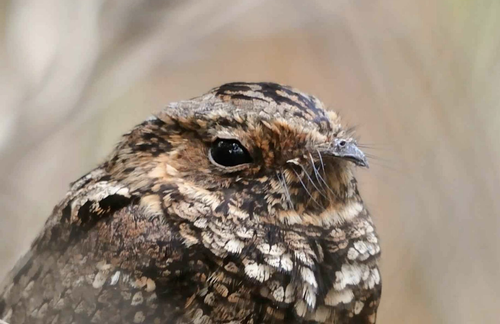
Puerto Rican Nightjar (Source: Ornithology: The Science of Birds).
With all of these feather types, there are examples of outliers — peacocks and birds of paradise grow elaborate ornamental feathers for use in courtship displays to attract females. Owls have specialized fringed feathers on the edge of their wings to muffle their sound as they prowl through the night searching for prey. The list goes on. Feathers are endlessly fascinating, and one could easily spend a lifetime observing the various forms and functions that they offer the birds who wear them.
Although feathers provide essential protection for nestlings, they don’t always stave off the brutal reality of nest life. As some of you know, the fourth eaglet in the PA Farm Country nest didn’t make it. The nestling was a full week younger than the first of their siblings. A night of freezing rain rolled in, and it was too much for a full nest with such a small nestling. This is a painful reminder that a clutch size of four is high for a bald eagle nest, and during times of food shortage or, in this case, inclement weather, the youngest fares the worst. We send warm wishes to the remaining three nestlings in the PA Farm Country nest.
The Hanover nestlings, however, look healthy, strong, and fully feathered. They are likely to do well in whichever weather comes their way. They have already lost their natal down and grown a full layer of body down, which they will carry with them into their next phase of life. Soon we will see darker feathers appear along specific tracks of their bodies, called pterylae.
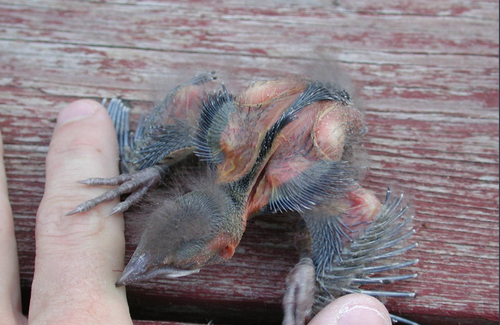
Pterylae on a grackle chick. The bare, unfeathered tracks are called apteria (Source: Flickr, Caleb G. Putnam).
Contour feathers and flight feathers will appear first, followed by head and back feathers. Here’s a reminder of the awkward pre-treen eagle nestling phase, which is just around the corner for these two Hanover kids:
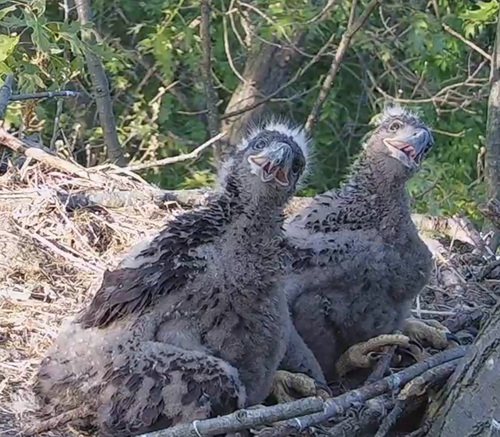
2019 Hanover Eagles
To learn more about feathers I recommend the book Feathers by Thor Hanson, and the podcast The Science of Birds episode 13, Feathers: Form and Function.
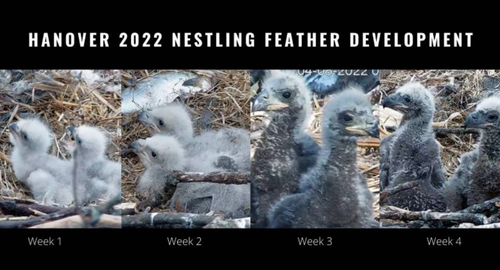
Fun Fact:
Juvenile eagles have slightly longer flight feathers than adults which gives them a larger appearance. So a female juvenile next to an adult male = quite the difference! These long flight feathers are replaced by normal-length ones after the youngster’s first molt.
Sources
Buehler, D. A. (2020). Bald Eagle (Haliaeetus leucocephalus), version 1.0. In Birds of the World (A. F. Poole and F. B. Gill, Editors). Cornell Lab of Ornithology, Ithaca, NY, USA. https://doi.org/10.2173/bow.baleag.01
The Center for Conservation Biology. (2019). Bald Eagle Chick Development.
https://ccbbirds.org/2011/04/30/bald-eagle-chick-development/
Cornell Lab of Ornithology. (2004). Handbook of Bird Biology. Princeton: NJ: Princeton University Press.
Hanson, Thor (2011). Feathers. Basic Books.
Phillipsen, Ivan (Host). (2020, November 12). Feathers: Form and Function (No. 13) [Audio podcast episode]. In Science of Birds. https://www.scienceofbirds.com/podcast/feathers-form-functions
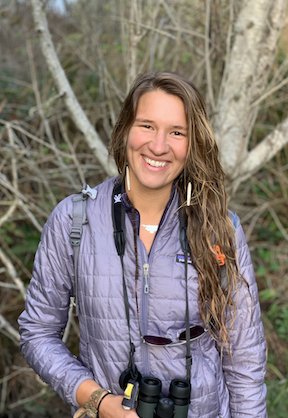
Raptor Ecology Specialist - Zoey Greenberg

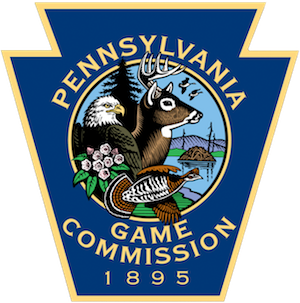
RETURN TO HANOVER BALD EAGLE BLOGS
WATCH THE HANOVER BALD EAGLE LIVE CAMS
For over 20 years, HDOnTap has provided live streaming solutions to resorts, amusement parks, wildlife refuges and more. In addition to maintaining a network of over 400 live webcams, HDOnTap specializes in design and installation of remote, off-grid and otherwise challenging live streaming solutions. Contact press@hdontap.com for all media needs, including images and recordings.